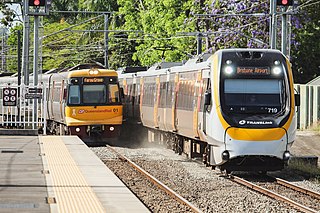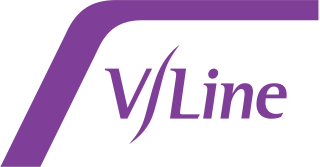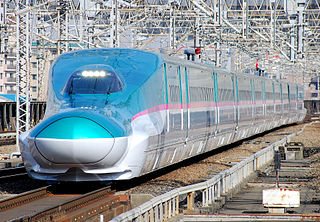
Proposals for expansion of the Melbourne rail network are commonly presented by political parties, government agencies, industry organisations and public transport advocacy groups. The extensions proposed take a variety of forms: electrification of existing routes to incorporate them into the suburban rail system; reconstruction of former passenger rail lines along pre-existing easements; entirely new routes intended to serve new areas with heavy rail or provide alternative routes in congested areas; or track amplification along existing routes to provide segregation of services. Other proposals are for the construction of new or relocated stations on existing lines, to provide improved access to public transport services.

Rail transport in Australia is a component of the Australian transport system. It is to a large extent state-based, as each state largely has its own operations, with the interstate network being developed ever since Australia's federation in 1901. As of 2022, the Australian rail network consists of a total of 32,929 kilometres (20,461 mi) of track built to three major track gauges: 18,007 kilometres (11,189 mi) of standard gauge, 2,685 kilometres (1,668 mi) of broad gauge, and 11,914 kilometres (7,403 mi) of narrow gauge lines. Additionally, about 1,400 kilometres (870 mi) of 610 mm / 2 ft gauge lines support the sugar-cane industry. 3,488 kilometres (2,167 mi), around 11 per cent of the Australian heavy railways network route-kilometres are electrified.

V/Line is a statutory authority that operates regional passenger train and coach services in the Australian state of Victoria. It provides passenger train services on five commuter lines and eight long-distance routes from its major hub at Southern Cross railway station in Melbourne. It also provides bus services across Victoria and into New South Wales, the Australian Capital Territory and South Australia. In addition, V/Line is responsible for the maintenance of much of the Victorian freight and passenger rail network outside of the areas managed by Metro Trains Melbourne and the Australian Rail Track Corporation.

The eastern states of Australia are the states adjoining the east continental coastline of Australia. These are the mainland states of Victoria, New South Wales and Queensland, and the island state of Tasmania. The Australian Capital Territory and Jervis Bay Territory, while not states, are also included. On some occasions, the southern state of South Australia is also included in this grouping due to its economic ties with the eastern states.

Canberra railway station is located on the NSW TrainLink Regional Southern Line in the Australian Capital Territory, Australia. It is located in the Canberra suburb of Kingston.

Inland Rail, also known as Inland Railway and previously Australian Inland Railway Expressway, is a 1727-kilometre (1073 mi) railway line under construction in Australia. Once complete, it will connect the ports of Melbourne and Brisbane along a new route west of the mountainous Great Dividing Range, bypassing the busy Sydney metropolitan area and allowing for the use of double-stacked freight trains. The route will also connect to the Sydney–Perth rail corridor, reducing journey times between Brisbane, Adelaide and Perth.

High-speed rail in Australia has been under investigation since the early 1980s. Every Federal Government since this time has investigated the feasibility of constructing high-speed rail with speeds above 200 km/h, but to date nothing has ever gone beyond the detailed planning stage. The most commonly suggested route is between Australia's two largest cities, Sydney and Melbourne, which, as of 2023, is the world's sixth busiest air corridor. Various corridors have been proposed for a potential high-speed line. The distance between them is around 800 km (500 miles), which requires very high speeds to make trains competitive with air travel.
The Sydney–Melbourne rail corridor is approximately 953-kilometre (592-mile) standard-gauge railway corridor that runs between Sydney and Melbourne (Victoria), the two largest cities in Australia. Freight and passenger services operate along the route, including the NSW TrainLink XPT passenger service.

Indian Railways does not currently have any operational high-speed rail lines, though a total of eight corridors have been approved, with the corridor between Mumbai and Ahmedabad under construction. As of 2023, the fastest train services that operate at speeds of 160 km/h (99 mph) are Gatimaan Express and Rani Kamalapati (Habibganj)–Hazrat Nizamuddin Vande Bharat Express on the Tughlakabad – Agra Cantonment section of the route and the regional RapidX services.

Hyperloop is a proposed high-speed transportation system for both public and goods transport. The idea was first published by Elon Musk in a white paper released in 2013, where the Hyperloop was described as a transportation project involving capsules supported by air-bearings in low-pressure environment inside a tube. Hyperloop systems have three essential elements: tubes, pods, and terminals. The tube is a large, sealed low-pressure system. The pod is a coach pressurized at atmospheric pressure that experiences low air resistance or friction inside this tube using magnetic propulsion. The terminal handles pod arrivals and departures. The Hyperloop, in the initial form proposed by Musk, differs from vactrains by relying on residual air pressure inside the tube to provide lift by aerofoils and propulsion by fans; however, many subsequent variants using the name "Hyperloop" have been relatively traditional vactrains.

The Canberra light rail network, also known as Canberra Metro, is a light rail system serving the city of Canberra, Australia. The initial 12-kilometre (7.5 mi) line links the northern town centre of Gungahlin to the city centre (Civic) and has 14 stops. Services commenced on 20 April 2019. The 14th stop at Sandford Street in Mitchell commenced operation in September 2021.

Melbourne Airport Rail is a proposed rail link from the Melbourne CBD to Melbourne Airport at Tullamarine. Since October 2022, the project has also been considered as part of the Suburban Rail Loop (SRL) and branded as SRL Airport. The rail link will run through the under-construction Metro Tunnel, running 27 km from the airport to Town Hall station in the city centre with 12 km of new track between the airport and Sunshine station. The link will be a new branch of the Melbourne Metro rail network and run High-Capacity Metro Trains at a 10-minute frequency. The project is being delivered by the Victorian state government agency Rail Projects Victoria.
The Very Fast Train (VFT) was a proposed high-speed railway between Sydney, Canberra and Melbourne in south-eastern Australia. Initially conceived by Dr Paul Wild of the CSIRO in 1984, the proposal was adopted by a private-sector joint venture in 1987, comprising Elders IXL, Kumagai Gumi, TNT and BHP. Several major studies were undertaken in the 1980s and early 1990s, which showed the proposal to be both technically and financially feasible.
Sydney Metro West is a rapid transit underground rail project currently under construction in Sydney, New South Wales, Australia. It involves constructing a rail line from Hunter St in the northern Sydney City Centre (CBD) to Westmead in the western suburbs of Greater Sydney which will generally run parallel to the existing Main Suburban and Main Western railway lines, but via different suburbs and different stations, with the main aims being the doubling of rail capacity between the City Centre and Greater Western Sydney and the relief of overcrowding on the Western Line. The line will form part of the Sydney Metro network.
The Regional Network Development Plan (RNDP) is a long-term plan for the provision of bus and train services to the regional areas of the state of Victoria, Australia. Produced four years after the Network Development Plan – Metropolitan Rail (NDPMR), which examined in detail the future expansion of the metropolitan Melbourne rail network, the RNDP was produced by the state government's Department of Economic Development, Jobs, Transport and Resources and sets forth short-, medium- and long-term priorities for the 5, 10 and 15 years after 2016 respectively.

Rail Projects Victoria (RPV) is an agency of the Government of Victoria, Australia, responsible for the management of certain major infrastructure projects on the Victorian rail network. Originally established as the Melbourne Metro Rail Authority (MMRA), to deliver the Melbourne Metro Rail Project, the office was later expanded in its responsibilities to include the management and planning of a number of major infrastructure programs on V/Line's regional rail services. It was renamed RPV in 2018 to reflect its expanded scope, and later became one of several project teams comprising the Department of Transport and Planning's Major Transport Infrastructure Authority.

The Western Rail Plan is a metropolitan rail infrastructure project being undertaken in Melbourne, Australia. The project was initially announced during the 2018 Victorian state election by the State Government. It includes the electrification of two currently existing regional lines to Melton and Wyndham Vale, and other network capacity upgrades.
The Canberra-Yass railway is a proposed 64-kilometre (40 mi) link between the centre of Canberra and the Sydney-Melbourne rail line at Yass Junction, via Yass town.

The Regional Rail Link (RRL) was a project to build a 47.5-kilometre (29.5 mi) length of railway through the western suburbs of Melbourne, Victoria, the main aim of which was to separate regional V/Line Ballarat, Bendigo and Geelong services from the electrified Melbourne suburban services, thereby increasing rail capacity and reliability. The project involved the building of an extra pair of tracks from Southern Cross station to Sunshine, parallel to the Western line, and a new double-track line from Deer Park, which joins with the Warrnambool line west of Werribee, near the site of the former Manor railway station. New stations were built at Tarneit and Wyndham Vale, while West Footscray and Sunshine stations were rebuilt. Additional platforms were built at Southern Cross and Footscray stations, and two level crossings near Sunshine were replaced by grade separations. The most used station before its construction, North Melbourne, was excluded from the project despite being the main connection hub for regional travellers not needing to go all the way to Southern Cross, and now requires regional rail link customers to change at Footscray.













